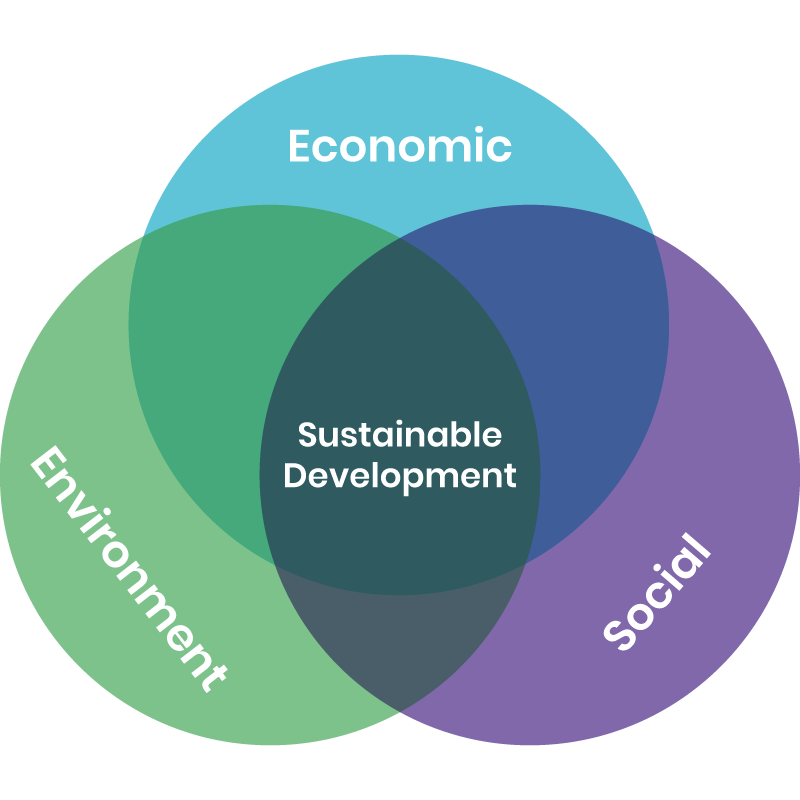Much has been written about the economic and environmental aspects of sustainable development. For many organizations, in fact, sustainable developments ends with monitoring environmental data. But sustainability is so much more. In this blog, I encourage teams to take a closer look at that third pillar of sustainability that tends to be overlooked by many organizations: social issues. I also shed some light on how using software such as Borealis can create value in your social engagement – 1 of the 3 key goals of sustainable development.
Stakeholders care about sustainability
Sustainability is now the cornerstone of any large-scale or infrastructure project. As organizations work to secure support for their projects, both internal and external stakeholders will be looking at how the organization plans to build sustainable development into the project’s lifespan.
In other words, upper management, financial lenders, government regulators, community members and a host of other interested stakeholders will all be asking the same question: How will your project balance its economic, social and environmental aspects over time?

Sustainability defined
“Sustainability focuses on meeting the needs of the present without compromising the ability of future generations to meet their needs. The concept of sustainability is composed of three pillars: economic, environmental, and social—also known informally as profits, planet, and people.”
– Source: Investopedia.com/terms
As the focus on corporate social responsibility and ESG (Environmental, Social, and Governance) investing grows – along with government regulations – teams will be expected to optimize their outcomes in all three pillars of sustainable development.
Without the proper management of social issues, having an acceptable footprint or an economically viable project isn’t good enough. By linking profit and planet to people, companies can help create brighter futures for local communities by contributing to better education, better health services, and better career opportunities. This is how companies can create value on a global scale and meet the objective of sustainable development.
Why it pays to take a global approach to sustainability management
Sustainability goes well beyond carbon footprint. It is a complex game of give and take among the various actors and factors involved in a given project. Project teams need to manage these complex and ever-evolving variables with care, all while adapting to the day-to-day changes that inevitably occur. They also need to do all this while working under the watchful eye of interested stakeholders, some of whom wield immense power over the project’s outcome.
Managing these countless variables effectively requires immense discipline and the right tool to instantly call up a clear portrait of the project’s sustainability. Social, environmental and economic issues are all intertwined in this dynamic relationship. It requires a strong capacity to effectively link all issues and quickly identify any missing links, including the steps that need to be taken.
This is how Borealis software helps teams create value for their project. By enabling them to always know the exact quality of their stakeholder relationships, they are better able to adapt their strategies to build trust, positive outcomes, and balance within their project.
As projects move into new phases and get passed on from one internal team to another, organizations must also be able to connect the endless stakeholder efforts that will be carried out over the course of the project. This is much easier to achieve when working with an effective method, carefully-selected criteria and the proper stakeholder engagement tool.
Managing multiple projects
with multiple teams
See how a Canadian energy company is using Borealis software to successfully manage multiple projects simultaneously.
The secret to successfully managing social issues over time: Communicate
Sincere and direct communication is the most appropriate and effective means of managing any complex issue. The social aspect of a large-scale ans infrastructure project is no exception to this rule.
Since effective communication is a two-way street, it’s vital that stakeholder relations teams take the time to first analyze their project stakeholders in order to understand their values, motivations, and concerns. This knowledge will be essential for ensuring productive and efficient communication between parties
The secret to successfully communicating with stakeholders over time: Knowledge
- Know who your stakeholders are.
- Understand their values, concerns and motivations.
- Know the communities located within the project territory and their unique characteristics.
- Map out the entire stakeholder landscape along with project assets.
- Repeat this process regularly to keep your knowledge relevant and up-to-date.
How Borealis helps teams create value in their sustainability strategy
Since 2004, Borealis stakeholder engagement software has been helping teams create value through the dynamic mapping of all interactions related to their sustainable development strategy.
How Borealis software creates value for your organization:
- Map stakeholders and the territory of projects, and identify areas that are particularly sensitive or where specific conditions exist.
- Implement more successful stakeholder engagement plans.
- Target stakeholder communications more accurately, based on the issues that matter most to them.
- Meaningfully link the growing web of stakeholder interactions, influences and contacts.
- Track improvements in key indicators such as level of education, sources of income, access to drinking water, investments in health and education, air quality, green space, etc.
- Report these KPIs with visual graphs that can be easily customized to make complex data easier for internal and external stakeholders to understand at a glance, based on their specific areas of interests.
- Measure results, identify gaps, apply lessons learned, and ensure the stakeholder engagement plan remains on-schedule, on-budget, and on the path to project acceptance.
Possible impacts of overlooking social issues in a sustainable development program
Virtually all projects require stakeholder buy-in. Teams that fail to diligently manage social issues do more than simply put sustainability goals at risk. They put the very project itself at risk. Last October, the International Monetary Fund reported that firms that ignore social issues risk facing growing financial pressures that could put them out of business.
But it’s not just financial lenders like the IMF who are paying attention. Government regulators, NGOs, employees, local communities, corporate watchdogs and other interested stakeholder groups also expect companies to give more than just lip service to their vow of being responsible corporate citizens.
- Boards of directors now view social purpose “as a viable strategy for building competitive advantage, and a virtual explosion of investor interest.”
- Employees want CEOs to speak out on social issues such as training for jobs of the future, income inequality, diversity and immigration. Doing so will boost employee morale and loyalty, while also helping to attract new and better talent.
- Consumers are three times more likely to trust companies based on their ethical positions, rather than their industry competence.
Ensuring a successful sustainability strategy
If you asked most companies, they would tell you that they work hard to create a positive social impact, whether it’s:
- Introducing safer working conditions
- Offering training programs to help low-wage workers increase potential earnings
- Supporting employee diversity and volunteering programs
And yet, few stakeholders really seem to take full notice of these efforts. A major reason for this is that many companies are still using a one-size-fits-all strategy to communicate their efforts – generally in the form of a glossy sustainability report that makes it only into a few hands.
(See our article Is your sustainability reporting still mostly fluff? to see where most companies go wrong.)
Social efforts should be strategically helping to build stakeholder trust. For example:
- Corporate watchdogs such as social media activists, NGOs, and government agencies want to see that organizations are taking the initiative to correct any wrongs and do what’s right.
- Employees want and need to feel pride in their workplace.
- Investors are increasingly using socially-driven criterial to determine a company’s risk level and value.
- Consumers want to feel good about the products and services they purchase, and are putting their dollars where their social conscious is.
Borealis software allows you to plan, implement and measure your communications strategy per stakeholder group, while also ensuring that no key stakeholders – or stakeholder expectations – fall between the cracks.
Contact our team if you need advice or support in developing
the social aspect of your sustainability strategy. We’re happy to help.
Additional insights on ensuring the success of your sustainability strategy.






